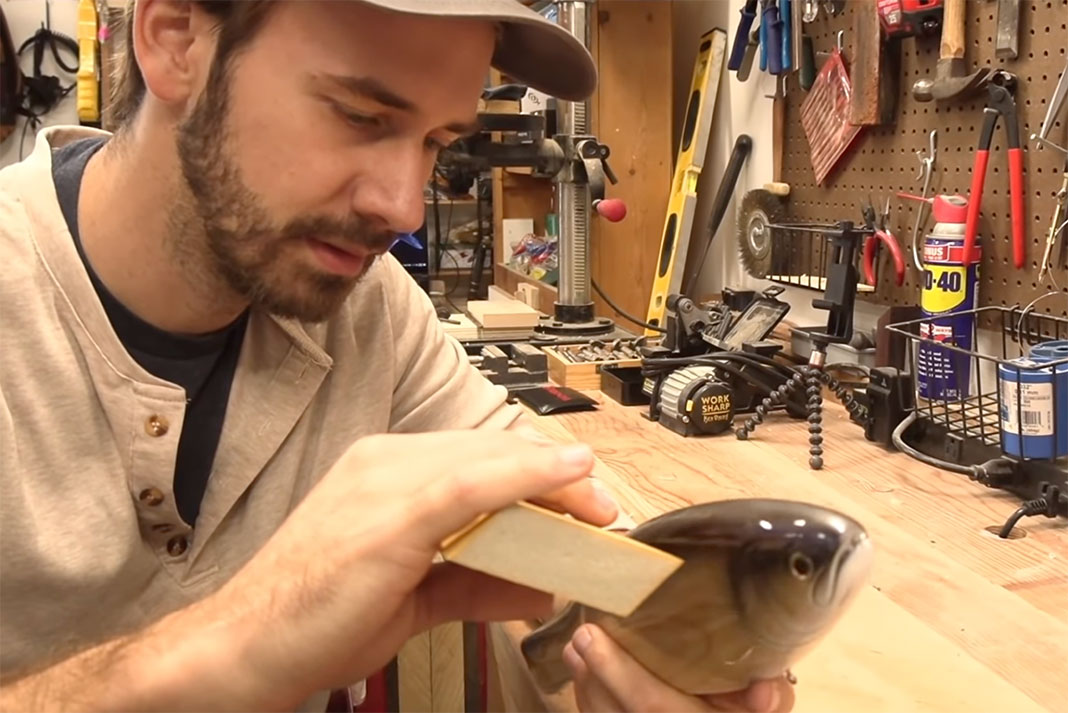Products You May Like
If you’ve ever wondered what’s going on inside a fancy fishing lure, this video is for you. Nate Marling of Marling Baits put it to his social media audience: For 10,000 likes he would disassemble a $1,200 RomanMade lure to see exactly what it contained. It took less than 15 hours to reach his goal, so Marling followed through with his very expensive experiment.
What’s Inside a $1,200 Fishing Lure?
10,000 likes or not, Marling hesitated with sandpaper in hand. “This is not easy to do,” the lure-maker confessed with a gulp. He started by removing the clear coat on the lure’s belly. “We’re going to expose the lead holes,” Marling explained, “so I can see when I’m about to run into them” with the bandsaw. He found that the bait used wooden plugs instead, so it had less lead than expected.

After removing the tail insert and clear coat, Marling could see that the bait was composed of two wooden halves glued together. Next, he started up the bandsaw. “This is nerve wracking,” Marling admitted. His solution? “Fire it up and just…not think about this too much.”
Beginning at the tail he cut along the center line, jogging around the hardware as he went. Cutting through the lead inserts did a real number on his bandsaw blade. The wood, he said, smelled like cedar as he cut. “It smells like a lot of solvents were used with this clear coat,” Marling noted.
“I think it was worth it.”
Once the sides were separated, Marling sanded down the cut to make the insides easier to see. All the lead plugs were visible, including some spots where lead wasn’t added to fine-tune the lure’s balance. He could even see pencil notations and a spot where the front hook was moved by the original maker. Overall, Marling was impressed with the lure’s clever construction.
So, was the experiment worth it? “The inside of this bait was interesting/complex enough to warrant sacrificing one,” said Marling. Just be thankful it was his $1,200 lure on the chopping block and not yours.
